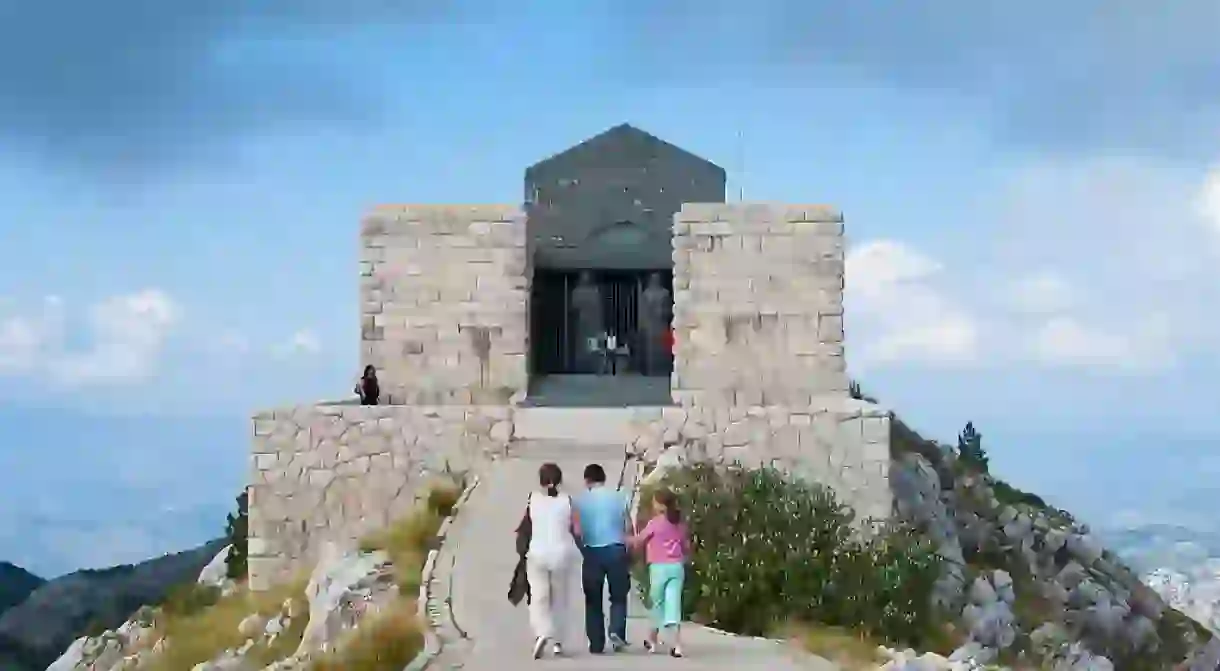Montenegro's Poet Prince: The Life and Times of Petar II Petrović-Njegoš

The shadow of one man looms large over the history and culture of Montenegro. Petar II Petrović-Njegoš (known largely as Njegoš) was a regional titan in both diplomatic and artistic circles, a man who stood tall (both literally and figuratively, as he was a whopping six feet and eight inches at his tallest) over his peers. This is the story of Montenegro’s poet prince.
Who was Petar II Petrović-Njegoš? The man who is buried on one of the nation’s highest peaks in Mount Lovćen was entirely deserving of that lofty position. A leader, a diplomat, a poet, a philosopher and more, when it comes to Montenegrins of history, it is difficult to look past this giant of a man as number one.
Born into privilege
Petar II Petrović-Njegoš wasn’t born with such an extravagant name. Born in the small village of Njeguši in either 1813 or 1814, he was christened Radivoje Petrović, and was the son of well-to-do father who lived to be 104 years old. Montenegro was still a land of tribes at the beginning of the 19th century, and the Petrović clan was one of the most influential. Their wealth is shown by the fact young Rade (a nickname for Radivoje) was born in the only two-storied stone house in the area.
The Petrović clan had provided Montenegro with its prince-bishop (the country’s leader, to all intents and purposes) since the late 17th century, but Rade was never supposed to take on the role. The original heir to the throne died young, and the next in line failed to return from an educational trip to Russia. When Petar I Petrović-Njegoš died in 1830 at the age of 83, young Rade was therefore the only option.

Montenegro’s greatest leader
Radivoje Petrović became Petar II Petrović-Njegoš when he was just over 17 years old. Other clan leaders began to plot to oust the young prince-bishop, but they didn’t reckon on the emotional maturity of young Njegoš. He was able to outmanoeuvre his potential foes and solidify his power base, taking complete control of Montenegro by the time he turned 18.
Njegoš quickly set about reforming the power structure of Montenegro, as well as dragging the tribal nation further into modernity. He built roads and schools, organised security in the country and imposed taxes for the first time in Montenegro’s history. That last point wasn’t hugely popular, but the intimidating influence and huge popularity of Njegoš made it work.
Njegoš was also a skilled diplomat on the international stage. He kept close ties with Russia for security reasons but wasn’t afraid to look west, north and south for advice and assistance. Njegoš was a true regional leader, one of the first in the modern iteration of the Balkans.
When Njegoš came to power as a cherub-faced teenager, Montenegro was little more than a vaguely autonomous province in the Ottoman-dominated Balkans, and a backwards one at that. The man from Njeguši managed to centralise power and implement something approaching an infrastructure, putting Montenegro well and truly on the path to modernity.

Montenegro’s greatest poet
That Njegoš managed these political victories in early 19th-century Montenegro is impressive enough. That he managed to do it while writing epic poetry that influenced generations is further proof that this was no ordinary leader. The Mountain Wreath (1847) stands tall as his greatest literary achievement, as revered by the Serbs as it is the Montenegrins.
The epic poem (titled Gorski Vijenac in the local language) clocks in at a scarcely believable 2,800 verses and centres around one grim incident that took place on Orthodox Christmas in the early 18th century. The Ottomans had run rampant and the people of Montenegro had no choice but to fight back. The poem details the Montenegrin fight to keep its culture alive while criticising the decisions of others to convert or flee. It is not flawless and it brought up some difficult ideological questions in the 1990s, but its influence is not up for debate.
Petar II Petrović-Njegoš was no ordinary Montenegrin leader. He was a towering man in both a physical and an ideological sense, providing the mountain nation with the tools to develop into the modern state it is today, and doing so while penning an epic poem that is still beloved nearly two centuries later. It’s no wonder his mausoleum is placed in such an epic spot, located on one of Mount Lovcen’s highest peaks.














